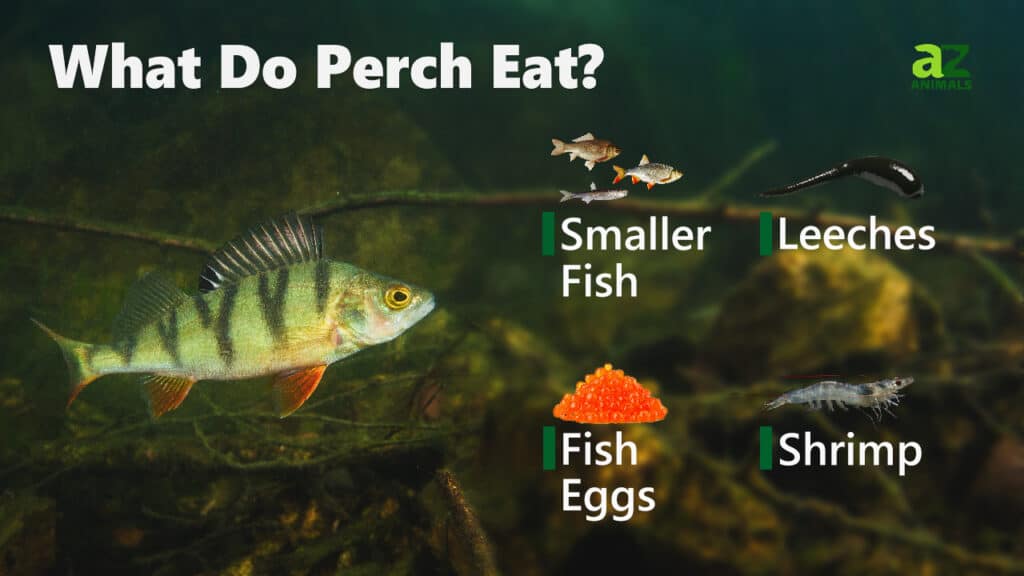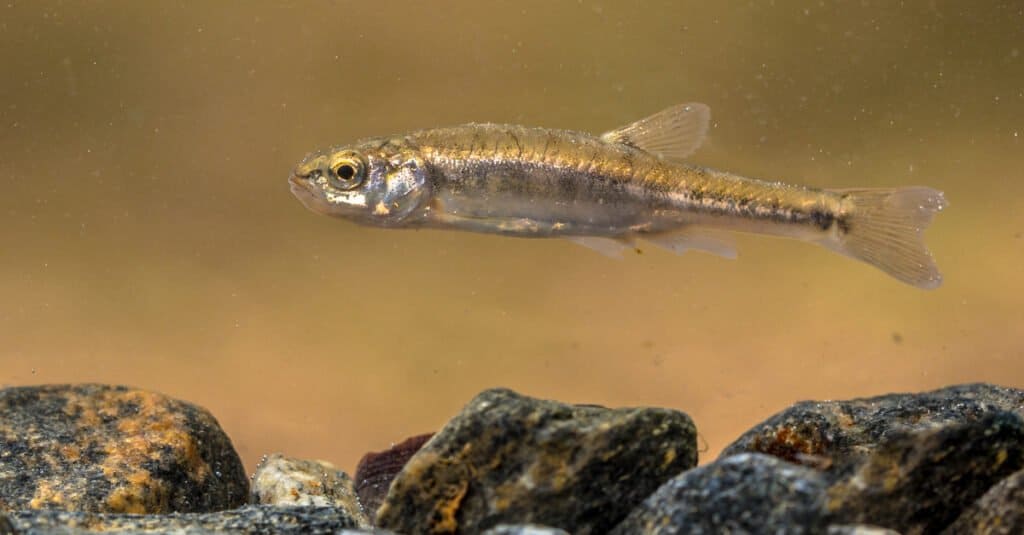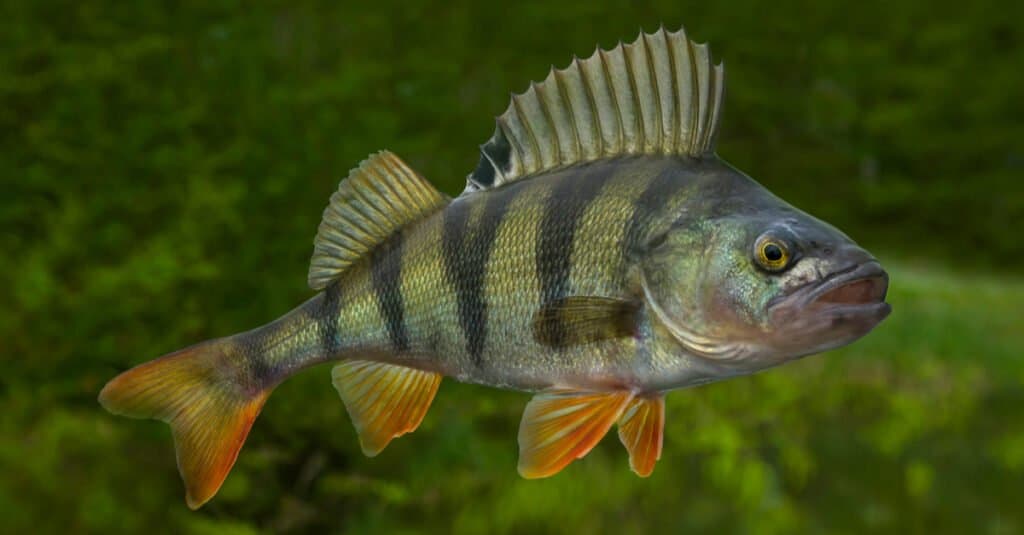Perch are freshwater gamefish from the family of ray-finned fish called Percidae. The yellow perch is “hunted” by fishers throughout the Northern Hemisphere, while perch are hunters of smaller animals for food. Whether fishing for perch in a lake, river, or stream, fishers known as anglers (using rod and reel) can catch yellow perch with just about any live bait they choose. Clearly, this fish isn’t a fussy eater. So what do perch eat? A wide variety of crustaceans, small fish, and other tiny living creatures they can find and catch in their mouths.
Let’s take a closer look at the perch’s diet, how they hunt, and what they eat as babies. We’ll also discover why it’s important for humans to be careful around or when handling perch. Beware of their bite and their sharp fins.
What Do Perch Eat?

Perch eat crustaceans, fish eggs, juvenile fish, insects, invertebrates, and larvae. Perch are carnivores that hunt other animals for food.
Adult perch are opportunistic hunters that usually feed on whatever tiny living creatures they can find and catch.
There are three main species of perch:
- Yellow perch found in North America
- Balkhash perch found in China, Kazakhstan, and Uzbekistan
- European perch found in Asia and Europe
All three perch species are predators with similar diets.
The yellow perch is an abundant animal species in the Great Lakes. Lake Erie has the largest population, where the perch eat a lot of mayfly larvae, midges, and water fleas. In addition, minnows are common perch bait used by Lake Erie anglers.
Common foods perch eat include:
- Alewives
- Bloodworms
- Copepods
- Crayfish
- Fish eggs (sometimes their own)
- Insects
- Invertebrates
- Juvenile fish (sometimes their own)
- Larvae
- Leeches
- Lobworms
- Maggots
- Mayflies
- Midges
- Minnows
- Mosquitoes
- Mysid shrimp
- Prawns
- Roaches
- Rotifers
- Round gobies
- Scuds
- Sticklebacks
- Water bees
- Water fleas
- Zooplankton
How Do Perch Hunt?

Perch hunt minnows and other tiny fish.
©Rudmer Zwerver/Shutterstock.com
The perch is a sneaky hunter. It hides and waits for prey near rocks, downed trees, and other structures in the water. Beaver dams are one of their favorite hunting grounds. By hiding in these areas, perch can surprise their prey while avoiding predators out hunting for them.
Perch hunt mainly by sight. For this reason, they more often hunt during daylight when the sun helps lead them to food.
Juvenile perch are notoriously slow swimmers. So even tucked away behind rocks and logs, young perch are often caught and gobbled up before they can do much hunting for themselves.
What Do Babies of Perch Eat?

Perch larvae eat a lot of zooplankton.
©Choksawatdikorn/Shutterstock.com
Female perch lay their eggs in early spring in warm, shallow waters. Together anywhere from 10,000 to 50,000 eggs form the shape of a strand and stick to vegetation. Male perch swim by to fertilize the eggs, which then hatch in 2-3 weeks. The hungry perch larvae eat zooplankton and zooplankton larvae, such as rotifers and tiny cladocerans (water fleas).
As perch larvae grow into juvenile fish, their diet changes. After about a year, juvenile perch eat larger zooplankton, plus macroinvertebrates like mosquitos. Juvenile perch hunt for larger animals as they age into adulthood.
What Do Perch Eat in Winter?
Any angler experienced with catching perch will tell you they are robust eaters even in the coldest water. However, when living in frigid winter temperatures, perch metabolism slows down. For this reason, they don’t need to eat as much in winter to feel satisfied.
Though perch are known for hiding to hunt, they’re also very curious and easily lured to the water’s surface. In winter, anglers know to attract them earlier in the day. Perch will likely swim to the surface in the late afternoon and check out your bait, but they might already be too full by then to take a bite.
Perch don’t usually hunt at night during winter. Instead, they sink to lower depths and remain dormant until dawn.
Are Perch Dangerous to Humans?

©FedBul/Shutterstock.com
Perch eat animals like insects and crustaceans, but they don’t chase humans. However, a perch might bite a human to protect itself. For this reason, a perch bite could be painful and become infected if not properly cared for on the spot.
A perch is also known for nibbling at human skin in a non-threatening or painful way. For example, if you dangle your legs in the river near a school of perch, you might soon feel a ticklish sensation as they gently gnaw on your tiny hairs and dead skin.
Beware that perch fins have sharp spines. Touching these spines could be painful, cause a cut on your skin, and possibly lead to infection if not treated properly.
The photo featured at the top of this post is © FedBul/Shutterstock.com
Thank you for reading! Have some feedback for us? Contact the AZ Animals editorial team.






